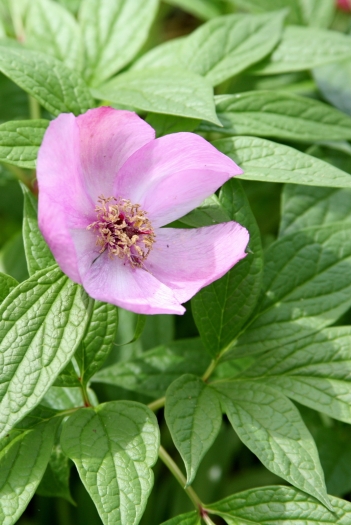Maire’s Peony
(Paeonia mairei)
Maire’s Peony (Paeonia mairei)
/
/

Cliff from I now live in Arlington, VA (Outside Washington DC), USA
CC BY 2.0
Image By:
Cliff from I now live in Arlington, VA (Outside Washington DC), USA
Recorded By:
Copyright:
CC BY 2.0
Copyright Notice:
Photo by: Cliff from I now live in Arlington, VA (Outside Washington DC), USA | License Type: CC BY 2.0 | License URL: https://creativecommons.org/licenses/by/2.0 | Uploader: File Upload Bot (Magnus Manske) | Publisher: Wikimedia Commons | Title: Paeonia_mairei.jpg | Notes: Photo of ''[[Astericus maritimus]]'' (gold coin) [[Desert Demonstration Garden]] in [[Las Vegas, Nevada]], taken April 2005 by [[User:Stan Shebs]] {{GFDL-self}} |

Estimated Native Range
Summary
Paeonia mairei, commonly known as Maire’s Peony, is a deciduous perennial herb native to the high-altitude forests and grassy slopes in North-Central China. It typically grows to a height of 1 foot (0.3 meters) and a width of 0.7 feet (0.2 meters). Maire’s Peony has a lush foliage of dark green leaves and produces large, cup-shaped, pink flowers in the spring that are moderately showy. The plant’s appearance is characterized by its attractive form and the contrast between its foliage and flower color.
Maire’s Peony is valued for its early spring blooms and is often used in garden borders, woodland gardens, and as a specimen plant. It is relatively low-maintenance, requiring minimal care once established. Gardeners appreciate its tolerance for part shade, making it suitable for areas with dappled sunlight. It prefers well-drained soils rich in organic matter and requires consistent moisture without waterlogging. While it is not prone to serious pests or diseases, botrytis blight and peony wilt can occasionally be problematic. It is important to provide good air circulation around the plants to minimize these issues. Maire’s Peony is not known for aggressive roots or invasiveness, making it a safe choice for most garden settings.CC BY-SA 4.0
Maire’s Peony is valued for its early spring blooms and is often used in garden borders, woodland gardens, and as a specimen plant. It is relatively low-maintenance, requiring minimal care once established. Gardeners appreciate its tolerance for part shade, making it suitable for areas with dappled sunlight. It prefers well-drained soils rich in organic matter and requires consistent moisture without waterlogging. While it is not prone to serious pests or diseases, botrytis blight and peony wilt can occasionally be problematic. It is important to provide good air circulation around the plants to minimize these issues. Maire’s Peony is not known for aggressive roots or invasiveness, making it a safe choice for most garden settings.CC BY-SA 4.0
Plant Description
- Plant Type: Herb
- Height: 2-3 feet
- Width: 0.467-0.7 feet
- Growth Rate: Moderate
- Flower Color: Pink
- Flowering Season: Spring
- Leaf Retention: Deciduous
Growth Requirements
- Sun: Part Shade
- Water: Medium
- Drainage: Medium
Common Uses
Bee Garden, Bird Garden, Butterfly Garden, Deer Resistant, Drought Tolerant, Fragrant, Hummingbird Garden, Low Maintenance, Rabbit Resistant, Showy Flowers
Natural Habitat
High-altitude forests and grassy slopes in North-Central China
Other Names
Common Names: Mei Li Shao Yao, Glanspion
Scientific Names: , Paeonia mairei, Paeonia bifurcata, Paeonia oxypetala, Paeonia mairei f. oxypetala,
GBIF Accepted Name: Paeonia mairei H.Lév.